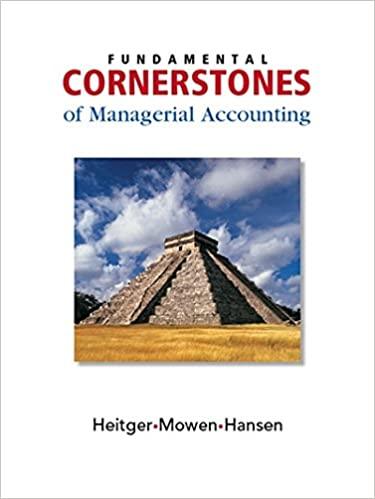Question
John and Georgia are married, file jointly, and have three dependents (qualifying children ages 13, 16, and 18). They have salaries of $130,000, a capital
John and Georgia are married, file jointly, and have three dependents (qualifying children ages 13, 16, and 18). They have salaries of $130,000, a capital loss of $8,000, and tax-exempt interest income of $1,000. They paid home mortgage interest of $10,000, state income taxes of $4,000, property taxes of $2,800, medical expenses of $3,000, and charitable contributions of $5,000. Federal income taxes of $11,000 were withheld from their paychecks. (The tax year is 2019.)
Read the requirement3.
Begin by computing their taxable income. (Complete all input fields. Enter a "0" for amounts with a zero balance. Use parentheses or a minus sign to enter a loss.)
| (1) |
|
| (2) |
|
| (3) |
|
| (4) |
|
| Taxable income |
|
|---|
Now compute their additional tax due or refund when they file their tax return. (Use the
2019
tax rate schedule for all tax calculations. Do not round intermediary calculations. Only round the amount you input in the cell to the nearest dollar. Enter a refund with parentheses or a minus sign.)
| (5) |
|
| (6) |
|
| (7) |
|
| (8) |
|
| Additional tax due (refund) |
|
|---|
1: Reference
| Filing Status | |
| Married individuals filing joint returns and surviving spouses | $24,400 |
|---|---|
| Heads of households | $18,350 |
| Unmarried individuals (other than surviving spouses and heads of households) | $12,200 |
| Married individuals filing separate returns | $12,200 |
| Additional standard deduction for the aged and the blind; Individual who is married and surviving spouses | $1,300* |
| Additional standard deduction for the aged and the blind; Individual who is unmarried and not a surviving spouse | $1,650* |
| Taxpayer claimed as dependent on another taxpayers return: Greater of (1) earned income plus $350 or (2) $1,100. |
|
| * These amounts are $2,600 and $3,300, respectively, for a taxpayer who is both aged and blind. | |
2: Reference
| If taxable income is: | The tax is: |
|---|---|
| Not over $19,400. . . . . . . . . . . . . | 10% of taxable income. |
| Over $19,400 but not over $78,950 | $1,940.00 + 12% of the excess over $19,400. |
| Over $78,950 but not over $168,400 | $9,086.00 + 22% of the excess over $78,950. |
| Over $168,400 but not over $321,450 | $28,765.00 + 24% of the excess over $168,400. |
| Over $321,450 but not over $408,200 | $65,497.00 + 32% of the excess over $321,450. |
| Over $408,200 but not over $612,350 | $93,257.00 + 35% of the excess over $408,200. |
| Over $612,350. . . . . . . . . . . . . . . | $164,709.50 + 37% of the excess over $612,350. |
3: Requirements
Compute the additional tax due or refund they have when filing their tax return
Step by Step Solution
There are 3 Steps involved in it
Step: 1

Get Instant Access to Expert-Tailored Solutions
See step-by-step solutions with expert insights and AI powered tools for academic success
Step: 2

Step: 3

Ace Your Homework with AI
Get the answers you need in no time with our AI-driven, step-by-step assistance
Get Started


